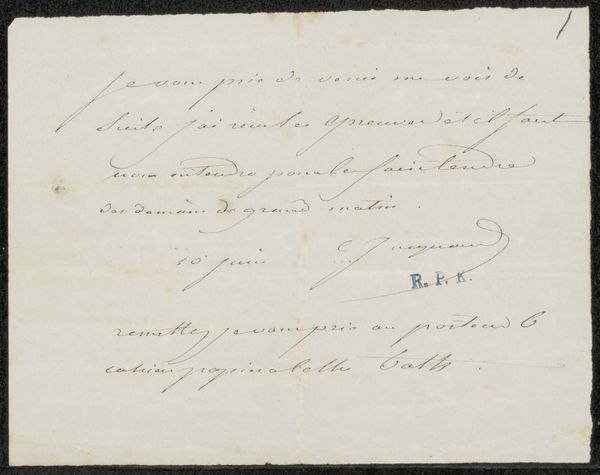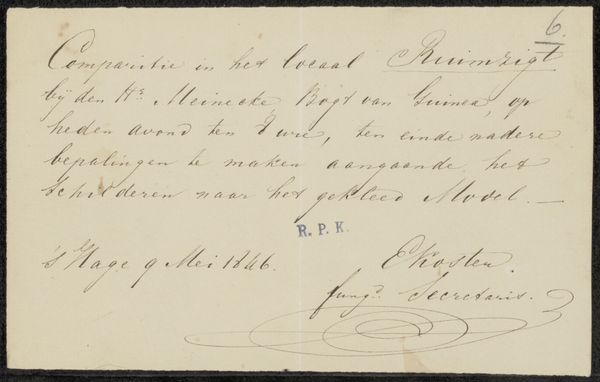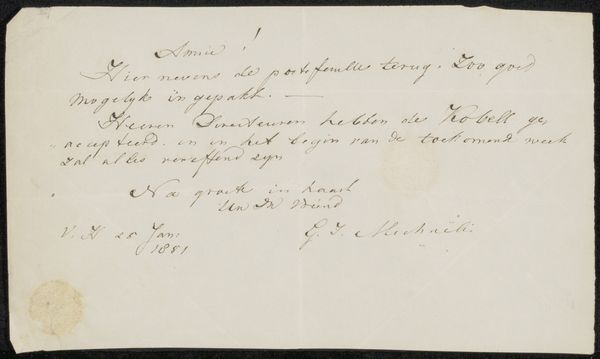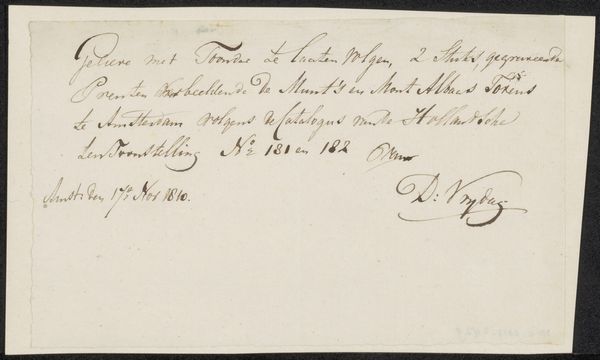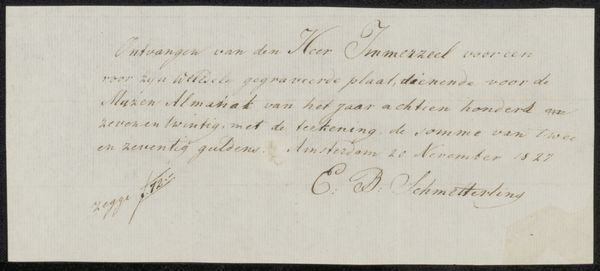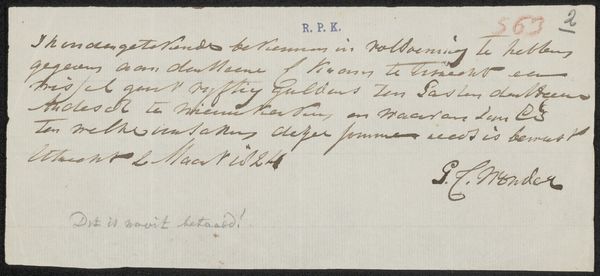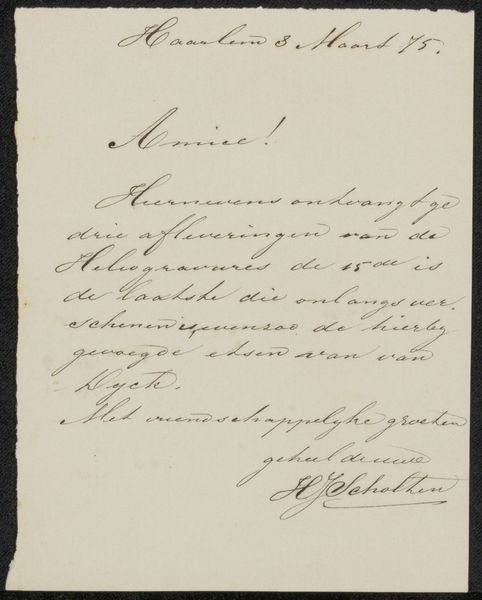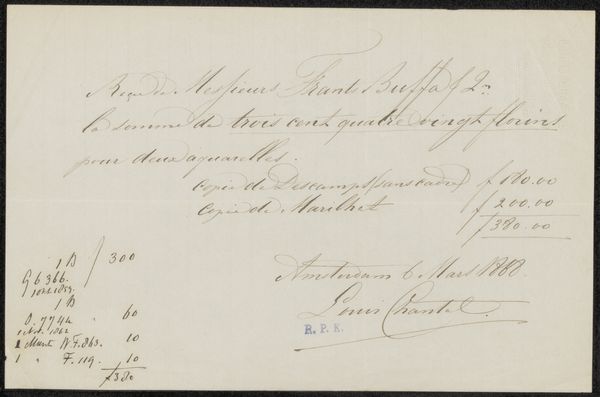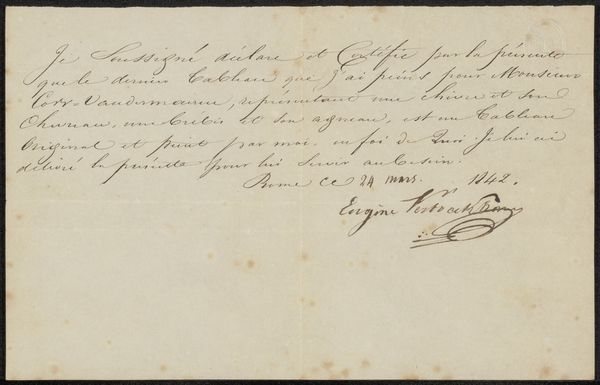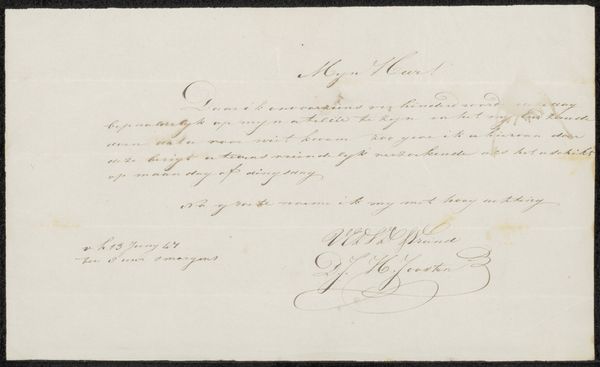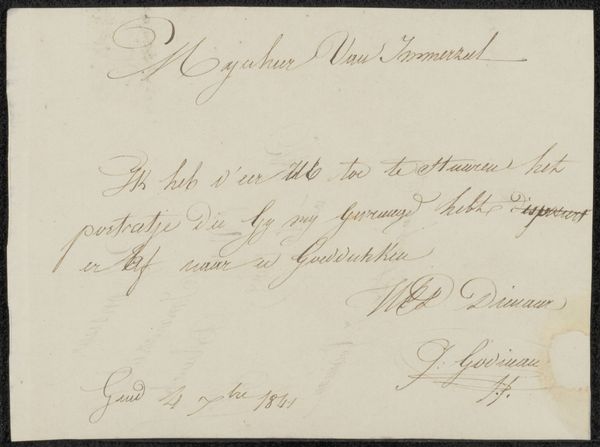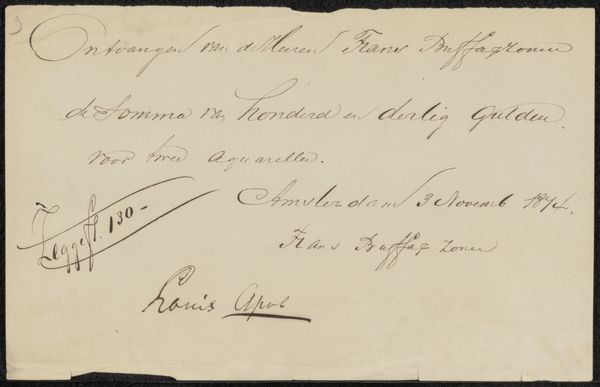
Kwitantie voor Lambertus Hardenberg (1822-1900) Possibly 1857
0:00
0:00
drawing, paper, pen
#
portrait
#
drawing
#
paper
#
pen
#
calligraphy
Copyright: Rijks Museum: Open Domain
Curator: Here we have "Receipt for Lambertus Hardenberg (1822-1900)," which we believe dates to 1857. It's a pen and ink drawing on paper by Petrus Augustinus Benedictus van Genabeth. The piece primarily features exquisite calligraphy. Editor: It feels surprisingly…intimate, wouldn't you agree? The scale, the cursive script, it’s almost like glimpsing a private communication. The document appears to represent something of value, although perhaps not entirely accessible to modern viewers. Curator: Indeed. Van Genabeth was a prominent figure, and this receipt offers a small window into the economic exchanges of the time. Hardenberg's receipt signifies the dynamics within Dutch society, showing how monetary contributions facilitated civic projects, perhaps reflecting community participation. Editor: Considering it’s essentially an IOU, what social meanings do you think were constructed from what appears to be beautifully articulated and signed financial record-keeping? Was the artistry of the record-keeping meant to further instill trust? Curator: Precisely. The document highlights the meticulous record-keeping and possibly highlights societal trust back then. And it subtly hints at socio-economic hierarchies, especially through such public acknowledgments like these receipts. Editor: So, who benefits from that artistry? Certainly the writer, solidifying a public signature and creating financial order—and, potentially, Hardenberg in preserving the record, as you said, by making transparent acts of monetary commitment to greater civic projects. Who may have felt excluded or impacted by what you identified, class distinctions represented? Curator: The artistic choices embedded within such administrative records invite a more thorough reconsideration of class and privilege from back then. It speaks volumes about civic contribution. Editor: Incredibly. To look at this receipt from centuries ago and see echoes of our relationships to community. I'm thankful that even simple artifacts such as this can invite considerations on money, civic action, and beautiful handwriting. Curator: A single sheet reflecting back centuries of civic values that might prompt all of us today.
Comments
No comments
Be the first to comment and join the conversation on the ultimate creative platform.
